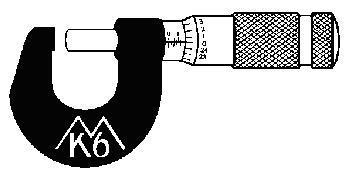What is a Design Change Vector (DCV)?
A Design Change Vector (DCV) captures the difference between
solid models, typically 2 versions of the same design.
DCV captures this information in such a way as to enable elementary
vector operations like addition and subtraction.
Guided Tour
DCV Whitepaper
What is the status of DCV?
-
An
early-development version will be ready in August 2012.
It will recognize and communicate design changes for most
CAD models.
It will have toolkit level capability to rescue severe
integration problems.
..Toolkit level meaning some custom development will still
be necessary for individual cases
If you have a challenging case please contact us at:
info@k6mfg.com
-
An open beta-test
starts September 2013
-
First release in
early 2014
What problems does DCV solve?
|
Communication
|
DCV communicates exactly what changed and how it changed.
This is vital information for an engineer or manufacturer receiving a
new version of a design.
|
|
Quality
|
DCV allows a designer to check his
work. It’s very easy to make
unintended changes to a solid model.
|
|
Teamwork
|
DCV can merge the work of 2 designers
working on the same solid model. This
allows a team to assign more designers to critical path tasks, improving
project schedules.
|
|
Integration
|
DCV improves the integration between
different CAD database formats. Specifically,
DCV enables tight-integration (aka close-coupled,
or associativity) when using neutral file formats like STEP or IGES (aka.
flat-files)
|
|
Rescuing Integration
|
Broken integration can have very serious negative
impact on a project, effecting cost and schedule.
DCV offers unique capabilities for repairing and
recovering the broken integration. |
|
Tight
money
|
DCV inexpensively solves integration
problems that would otherwise require an entire enterprise to retool their CAD
applications. So the current
downturn in business spending works in our favor.
|
Why hasn’t this already been done?
·
Very few in the industry understand the
relationship between design changes, integration, and persistent identifiers.
·
Industry leaders believed it was impossible to
recognize design changes without persistent identifiers on the geometry.
CAD systems rarely export persistent identifiers.
DCV works without any reliance on persistent identifiers. In fact
DCV can provide persistant identifiers when the export process leaves them out,
thus solving a wide range of integration problems.

